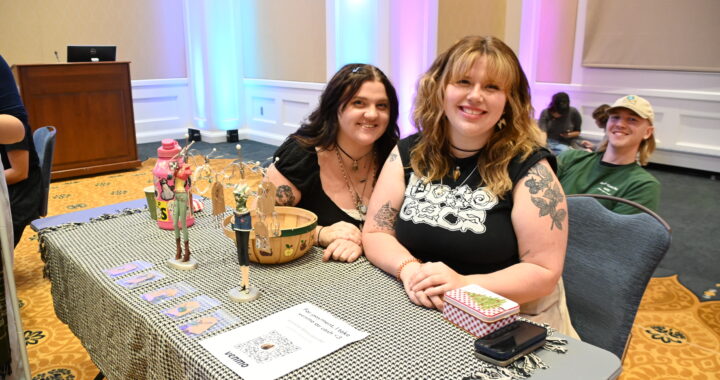UMW’s Publicly Hidden Art
4 min read
Particular forms of art can be found all over campus, specifically in bathroom stalls | James Pryor
By JAMES PRYOR
Staff Photographer
A bathroom is not a place you go to for art. Unless you’re in a modern art museum, looking for a breath of air from being surrounded by high class, art savvy, rich individuals, in which case you might stumble into a bathroom and notice a very minimalistic, yet expressive, work of art, all while fighting off the overwhelming feeling of impostor syndrome that comes with participating “high society.” But a public bathroom on a college campus in Fredericksburg, Virginia, is not the place you’d be looking for art.
Yet, written and carved into the insides of men’s bathroom stalls is a strange form of art most only glance over when face to face with the messages on the walls.
To fully understand the photos showcased in this essay, I want to ask that we redefine our understanding of art itself. Not as something that’s intentionally made in the name of art, but instead we’ll define it as an expression of being human in some way shape or form. Art doesn’t need to be created in a studio to be art; art can be anything we want it to be. Anything that reflects the unique phenomenon that is the human experience is art, intentional or not.
The first photo seems basic. It’s an homage to “The Shining,” most likely written by either a diehard fan, or a bored bathroom-goer who had just recently seen the movie and realized how easy it would be to replicate the “RedЯum” that’s a constant motif throughout both the book and the movie. The human experience behind this is a reach, but humans love to mimic. Out of boredom or because they’re truly a fan: humans love to reproduce anything that ignites an emotion within them. The first caveman to place his handprint on the inside of his cave was followed by so many others. Human’s thrive within a community that allows each individual to have a sense of self, without too much distance from others that leads to a feeling of isolation. So, writing “RedЯum” on the inside of a bathroom stall may have just been done out of boredom. However, the fact that it can be recognized by so many other individuals gives it a greater meaning as a symbol, not just a simple media reference.

I will admit, looking at graffiti on the inside of bathroom stalls through a serious lens is more or less a fool’s errand. Most of it is too vulgar to even photograph, as you don’t want to infect the outside world with what goes on inside a bathroom. Even a public bathroom is a private space, in its own way. And how people act when they know they’re hidden from sight tells so much about them.
This vandalism couldn’t be seen through a serious lens at all. The phrase “Well… I guess you could say that pop got smoked” was written to make someone laugh at a dark joke. It’s referencing the death of American rapper Pop Smoke who died in February of 2020. Making light of a death is about as dark as humor can get, the slight play on words is what brings the humor into the equation. Morally, it’s wrong to laugh at the death of another, but within the privacy of a public bathroom, no one knows if you’re smiling to yourself.


Finally, this last “artwork” stood out from the rest because of its craftsmanship. The context of the complete message is too vulgar to share, but the fact that it was not written—but carved into the stone of the bathroom stall in DuPont on campus makes it special. It reads “Call Shane 571-499-**** Clean & Discreet.” Unlike the two previous vandalisms, this one cannot be simply rubbed off or wiped away, this one remains unless the entire stone wall is removed. The message itself could have been sincere, or a joke done to wrongly post someone’s phone number in a public space, but regardless it will remain. It makes the viewer wonder how much time and effort was spent carving those letters and numbers into the stone. It must’ve taken longer than a normal bathroom trip, how long was the author/artist/technically criminal sitting there? Was this an act of spite that drove them to carve the message into not just a bathroom stall wall, but a stone one at that? These are questions we will never have the answers to, but that’s what makes it so enticing.
Finding art within a bathroom is again, not something most would consider common. Yet UMW is home to so many artists, some who would not be normally classified as such. When we expand our ideas of what “is,” we welcome a new perspective on life that allows us to see and appreciate the little things that are usually cast aside without second thought—exactly like a tacky scribble on the inside of a bathroom stall.



We need more content like this. Inside scoop on the ladies’ room art perhaps?